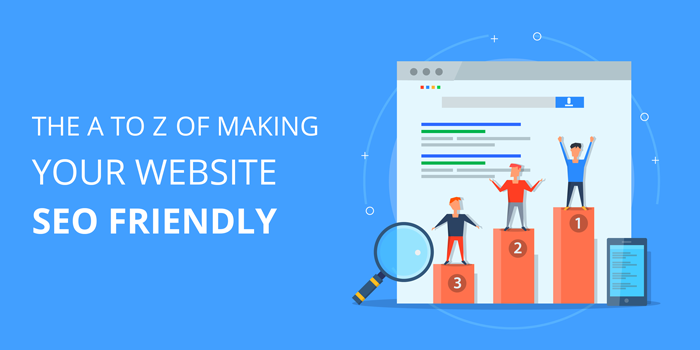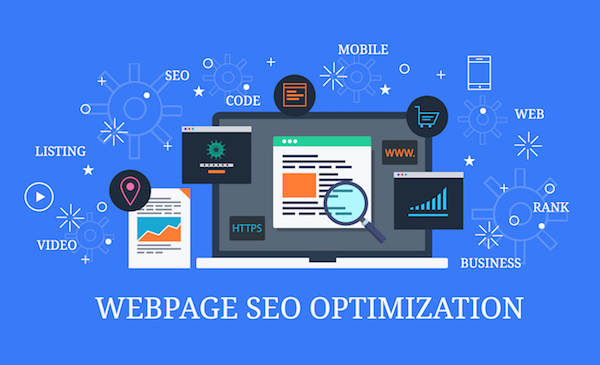If you’re just getting started with search engine optimization (SEO), then a step-by-step SEO tutorial is in order. By this point, you’ve likely heard of a few basic terms, such as keyword research and on-page optimization. But how do you apply all the knowledge you’ve gathered thus far?
We’ll walk you through it step-by-step. No matter how new you are to SEO, anyone can get started with the below SEO tips and get their website to rank in no time. Well — some time. Maybe a year or more. SEO, you should know, is a long game.

Seo for website step by step
Step 1: Find keywords.
Step 2: Put keywords in the page title.
Step 3: Put keywords in the page URL.
Step 4: Put keywords in your meta description.
Step 5: Put keywords in your H1 text.
Step 6: Use keywords in the page’s content.
Step 7: Build links to your website.
Step 8: Monitor your rank.
1. Find keywords.Keyword research is as simple as picking a list of words and phrases relevant to your business. Think about which words are most likely to get people to do what you want them to do (visit your website and submit a form) and focus on those words.
You can use a dedicated keyword research tool, but as a beginner, it’s wise to choose your keywords intuitively at first. For instance, if you sell roasted coffee, you might opt for “roasted coffee,” “Colombian coffee,” and “local coffee roaster.”
List these keywords out in a spreadsheet or document for you to keep track of. Then, pick one word or phrase to use on one page of your site. In other words, you don’t want to target different keywords on one page. You want to target one keyword, as well as any keywords it’s semantically related to.
For instance, you might write a page for “local coffee roaster.” In this page, you can target semantically related terms such as “local coffee,” “coffee roaster near me,” “coffee roaster [city name],” and “locally roasted coffee.”
Here’s an example of what that looks like:seo step-by-step tutorial: keyword variants

You can see a few keyword variants: “CRM software,” ”CRM solution,” and “free CRM.”
2. Put keywords in the page title.
Once you’ve chosen a keyword, it’s time to put it into action. First up, you want to put in your web page’s title.
The page title is one of the most important things that Google and other search engines evaluate to determine what is on a web page. It’s what appears on top of your web page’s result in the search engine results pages (SERPs). Notice how the following brand put its keyword, “Atlanta Coffee Roaster,” on its page title:
Don’t forget to keep it short. We recommend 65 characters or fewer to ensure that search engines don’t trim your title, like in this search result:
Keep in mind that your brand name is part of the character count of your website’s title.
3. Put keywords in the page URL.
Google and other search engines also use the text of the URL of the page to determine the content of the web page. You should use your keyword or phrase specifically in the slug.
seo step-by-step tutorial: url slug

Don’t overdo it, though. If you sell coffee, for instance, don’t create a slug as follows:
mycoffeecompany.com/coffee-atlanta-near-me-fulton-county-greater-atlanta-area-coffee
Keep it short, descriptive, and simple. One effective example would be:
mycoffeecompany.com/atlanta-coffee-roaster
If you’re using WordPress, here’s how to change your web pages’ slugs in the backend.
4. Put keywords in your meta description.
Your page’s meta description can further tell search engines and users what your page is about.
seo step-by-step tutorial: meta description
While metadata is not nearly as important as it used to be, it still counts. Take advantage by putting your keyword or phrase there. The description should be readable by a person and make sense, and the keyword metadata should focus on your keyword or phrase. Don’t make it long — less is often more.
5. Put keywords in your H1 text.
The H1 text is usually the title of an article or some larger bold text at the top of your page. Google and other search engines can see this, and they put extra importance on the words in the H1 text. Make sure your keyword or phrase is there.

6. Use keywords in the page’s content.
Using your target keywords in your content is an essential part of your on-page SEO strategy.
Why? Because doing that signals to search engines that the page is actually about the keyword and should show up in search results. I have heard from “experts” that you should use your keyword anywhere from 4-6 times to 10-12 times. My advice is to just write naturally, but to carefully avoid black-hat practices such as keyword stuffing.
In other words, don’t write something like this:
“We are Atlanta Coffee Roasters, the best coffee roasting company in Atlanta, GA, where you can find Atlanta locally roasted coffee roasted by hand in our coffee shop serving the greater Atlanta area.”
That’s simply unreadable. Compare that with the content from the local coffee roaster company:
“At Peach Coffee Roasters, we’re passionate about single-origin coffees and carefully crafted blends. We have three licensed Coffee Q-Graders who select the best coffees from around the world and roast them to perfection. This obsession with quality extends to every step of the process, from green coffee sourcing to small-batch roasting and using only the best brewing methods every time. “
7. Build links to your website.
Once you signal relevancy to search engines via your keywords, it’s time for the hard work to start: building inbound links to your website from authoritative sites in your industry or niche.
This is arguably one of the most important SEO steps you have to take. The number and quality of links pointing to your website are quite important to Google and other search engines to evaluate your rank on different terms. If people are linking to you, then that means that your site offers authoritative, trustworthy information on a certain topic.
For instance, check out the backlink HubSpot received in this Digital Trends article (anchor text: “Accruing inbound links”):

You should also externally link to websites related to your industry, which further demonstrates your relevance for that keyword.
8. Monitor your rank.
Last but not least, it’s time to check on the results from your efforts. Give the search engines some time to do their thing (from a couple of weeks to a few months), and then keep checking your rank to see what happened and track your progress.
If you’re just getting started with SEO, you can check this rank manually by searching for your target keyword in Google. We also recommend using Google Search Console to see your rankings for free. Since GSC can be limited in some respects, you can upgrade to an official SEO monitoring tool to track the most relevant keywords and consistently come up with strategies to improve your performance.
On that same vein, you should monitor your Google PageRank. Google uses your Page Rank as a measure of how “important” your website is on the web. Having a higher Page Rank means you have a better shot at being one of the top results for search terms.
Use a free tool such as Check Page Rank to get an estimate.
During the monitoring process, you should also grade your website. Use a free tohttps://www.youtube.com/watch?v=rpwD50v0Ubool such as Website Grader to evaluate the SEO effectiveness of your site.
This SEO Step-by-Step Tutorial is Just the Beginning
Don’t let your learning to stop here. With the above steps, you can get started creating an effective search engine optimization strategy, but keep in mind that SEO has countless moving parts that warrant care, attention, and tenacity. That’s why some companies have entire teams dedicated to their SEO efforts.
The good news is that you don’t have to guess about your next steps. Use our starter pack to ramp up your SEO plans and boost the likelihood of your website ranking on the first page of the SERPs.